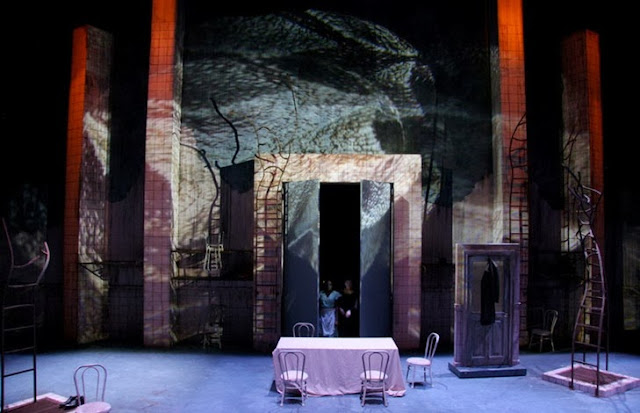By Olivia Maria Hărşan
I decided to watch this film on a particularly slow day of writing. I had read about The Saragossa Manuscript before and somehow obtained the film, as I discovered while scanning through the contents of my hard drive. So I threw my books to the side and opted for a modest cinematic experience on my laptop. The film drew me in and woke me up and out of my afternoon daze, so much so that I forgot the time and it was not until I heard the not so distant humming of a vacuum cleaner that I realised I better call it quits before I get locked in the office. I watched the rest when I got home and then managed to follow it up with a viewing of another historical epic - Luchino Visconti's The Leopard (1963). That adds up to approximately 6 hours of art cinema dedication - although neither are what most would consider to fit in the art film genre, both portray metaphorical elements that call for a philosophical examination of the immortality theme. But let us get back to Saragossa and la mode. Although the outfits epitomise a touch of zaniness, particularly the over-the-top display of corseted breasts, there remains a strong level of appreciation for the costumes, imagined and created by Polish couple power team Lidia Skarzynska and Jerzy Skarzynski.


Zbigniew Cybluski's outfit here somehow mimics his horse who in turn looks grand adorned in embroidered velvet.
Ruffles of a 'frou frou' nature.
This hat! Reminiscent of a 1940's femme fatale noir. Add some gold cuffs and the intention of evoking a mysterious, perhaps dangerous woman is a success.
The gold coin-type head jewellery is perhaps an ode to Ancient Greek fashions.
Unusual slit in the middle of the dress creates an interesting balance in its structure. Nevertheless the echo of 80's avant-garde aesthetic resonates in this costume.
See what I mean about breast emphasis? The sultan devours tropical fruit while a half naked servant sporting gold nipple pasties waits nearby - need more of a hint...? Suggestiveness is at its peak in this image thanks to great costuming work.










































+(1967).avi_snapshot_00.02.45_%5B2011.07.21_22.57.16%5D.jpg)
+(1967).avi_snapshot_00.10.43_%5B2011.07.21_22.58.15%5D.jpg)
+(1967).avi_snapshot_00.40.42_%5B2011.07.21_23.00.47%5D.jpg)
+(1967).avi_snapshot_00.46.41_%5B2011.07.21_23.01.16%5D.jpg)
+(1967).avi_snapshot_00.49.17_%5B2011.07.21_23.01.46%5D.jpg)
+(1967).avi_snapshot_01.10.53_%5B2011.07.21_23.02.07%5D.jpg)
+(1967).avi_snapshot_01.24.57_%5B2011.07.21_23.02.48%5D.jpg)
+(1967).avi_snapshot_01.25.40_%5B2011.07.21_23.02.34%5D.jpg)
